Have you ever tried to move after a long inactivity, only to feel stiff and sore? Or you may have noticed that your joints ache after a long car ride. These scenarios are common as we age; the longer we go without addressing them, the worse they become. That's where mobility training comes in. Mobility training focuses on increasing the range of motion around a joint, not to be confused with flexibility. Weighted mobility exercises are an effective way to improve mobility. They help develop strength and control in a joint's ranges of motion, especially the ones that tend to get stiff from inactivity. This article will cover the benefits of weighted mobility exercises, and I’ll walk you through a few simple drills you can start using today to help get your body moving better.
Pliability’s mobility app can help you find even more weighted mobility exercises and routines to help you achieve your goals. The easy-to-follow videos will get you moving more freely in no time.
What is Weighted Mobility Training & its Importance
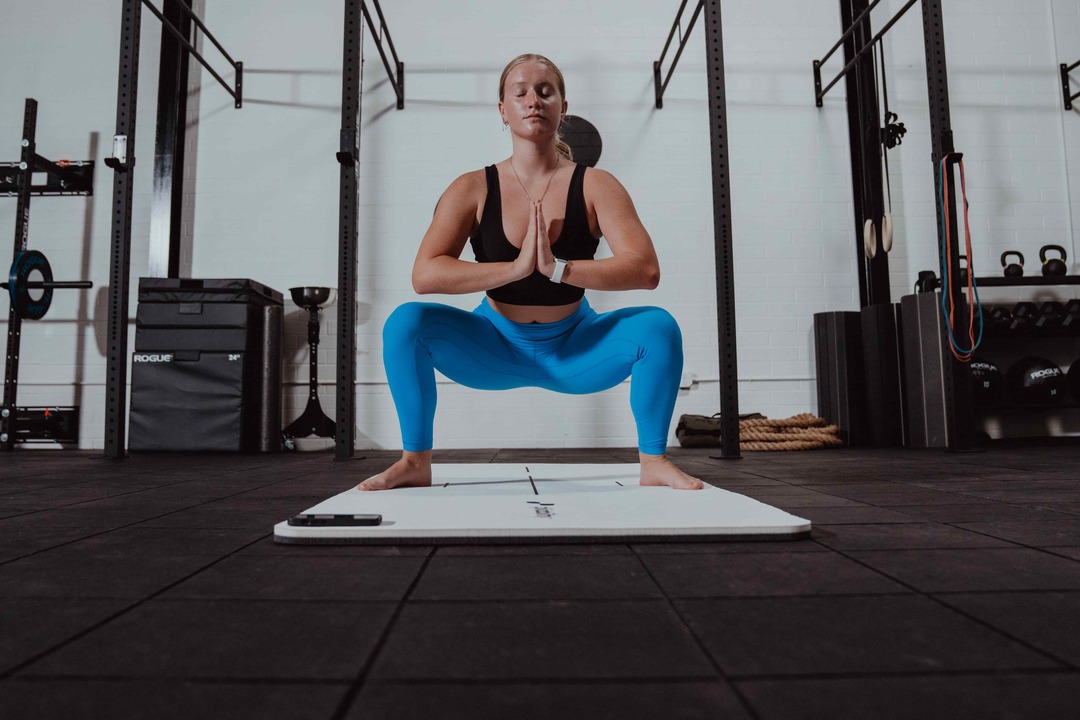
Weighted mobility training combines traditional mobility exercises with added weight (think dumbbells or kettlebells) to:
- Improve strength
- Flexibility
- Range of motion
This hybrid approach's primary goals are to enhance joint stability, improve functional fitness, and promote injury prevention.
Why does this matter? Because it can benefit athletes, those recovering from injuries, and anyone looking to improve overall movement quality in day-to-day activities. Many very flexible people may often be frail, just as many very strong people are also very stiff. Adding load to your stretches can strengthen your flexibility. What is the point of being able to contort your body into an extreme position if you cannot actively use that range of motion elsewhere? Progressively add weight to challenge your body to adapt by strengthening and lengthening your muscles simultaneously to move into and out of challenging positions.
Move It or Lose It
For many adults, years of improper sedentary living and weight training have caused their bodies to stiffen up dysfunctionally. When we work desk patrol for 40 hours each week, and our only training is the:
- Bench press
- Bicep curls
- Lat pulldowns
Our shoulders will hypnotically slump forward, our hip flexors will chronically flex (shorten), and our hamstrings will become as tight as piano wires. Our bodies are designed to adapt to the most efficient pattern, good or bad. The harsh reality is that when you have unwittingly turned your body into a piano-wired T-REX, it will take more than just a static body weight stretch session to fix it. The solution is weighted mobility.
Not Your Average Stretching
The typical outdated recommendations for increasing flexibility include, “Increase your range of motion using only your body weight, by statically holding a stretch for extended periods of time.” The Gymnastic Strength Training approach takes the same theory and adds load into the equation via weighted mobility work, thereby changing the entire scenario. This is not your:
- Chakra-aligning
- Candle-burning
- Mood-relaxing
Kind of stretching. Weighted mobility challenges your body to build flexibility and strength in the positions you need most by helping your fascia adapt. Fascia, the sheet of connective tissue between your muscles and your skin, can become rigid, stiff, and glued into place if you do not regularly move your body through full ranges of motion.
Weighted mobility work can help undo this damage by forcing the glued fascia to adapt positively. Unlike bodyweight exercises, which use your body weight to build muscle, weight training exercises use:
- Barbells
- Dumbbells
- Kettlebells
- Weight machines
Common Mobility Issues
Mobility issues often result from poor or insufficient training and can negatively impact performance for various exercises. Tight hips can restrict a lifter's ability to achieve full hip flexion or a deep squat, which is crucial for effective lower-body movements. Common causes often include poor mobility from long periods of sitting or insufficient training on stretching for deadlifts and deep squats.
Preventing Stiff Shoulders and Tight Hamstrings in Weightlifting
Stiff shoulders typically arise from inadequate shoulder stretches and limited thoracic mobility, impacting muscle fibers in the upper back muscles. This restricts a lifter’s ability to maintain an overhead position, which is essential in movements like the snatch in Olympic weightlifting.
Tight hamstrings result from limited muscle elasticity and neglecting flexibility exercises focused on the thigh muscle. This affects the starting position and form during exercises like the conventional deadlift, increasing the risk of lower back (lumbar spine) and hip pain.
Addressing Ankle Mobility and Thoracic Spine Stiffness in Weightlifting
Ankle mobility restrictions arise from poor mobility in the ankle joint, which is often neglected in mobility routines. This limits the ability to maintain a 90-degree angle in the squat position, which is pivotal for effective squat variations.
During mobility training, thoracic spine (upper back) stiffness is caused by static postures and inadequate attention to the entire spine’s dynamic movement capabilities. This limits the range of motion necessary for maintaining a safe, injury-preventing posture during lifts.
14 Benefits of Weighted Exercises, Backed by Science
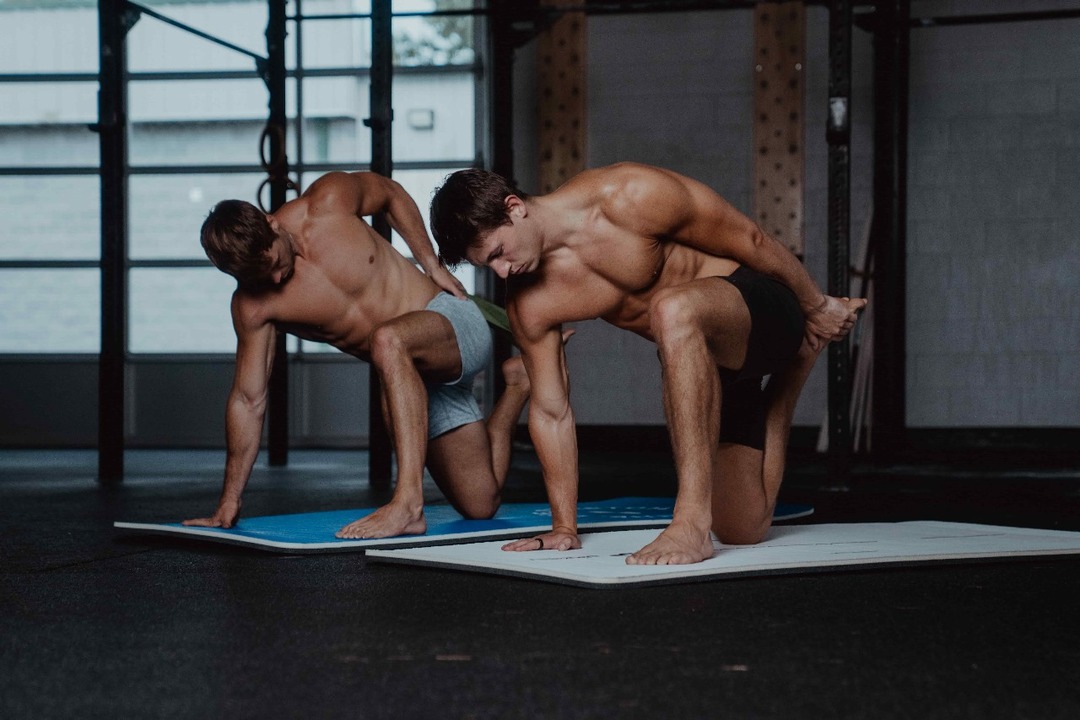
1. Get Stronger with Weighted Mobility Exercises
Strength training helps you become stronger. According to researchers, gaining strength makes daily tasks much easier, such as carrying heavy groceries or running around with your kids. Research has also found that it helps improve athletic performance in sports that require speed, power, and strength. One study found that strength training may increase lean muscle mass.
2. Burn More Calories with Weighted Mobility Exercises
Strength training helps boost your metabolism in two ways. Research shows that building muscle increases your metabolic rate. Muscles are more metabolically active than fat mass, allowing you to burn more calories at rest.
Research shows that your metabolic rate is increased after strength-training exercise. This means you’re still burning additional calories hours and even days after your workout.
3. Decrease Abdominal Fat with Weighted Mobility Exercises
Fat stored around the abdomen, especially visceral fat, increases the risk of chronic diseases. According to research, this includes:
- Heart disease
- Type 2 diabetes
- Certain types of cancer
Studies have shown the benefit of strength-training exercises for reducing abdominal and total body fat.
4. Improve Your Appearance with Weighted Mobility Exercises
As you build more muscle and lose fat, you will appear leaner. This is because muscle is more dense than fat, meaning it takes up less space on your body pound for pound.
You may lose inches off your waist even if you don’t see a change in the number on the scale. Losing body fat and building stronger and larger muscles showcases more muscle definition, creating a stronger and leaner appearance.
5. Decrease Your Risk of Falls with Weighted Mobility Exercises
Research shows that all exercise decreases the risk of falls, but strength training is especially effective. One study found strength training in the legs crucial in reducing fall risk. Studies have found that many forms of strength training, such as tai chi, weight training, resistance bands, and bodyweight exercises, are effective.
6. Lower Your Risk of Injury with Weighted Mobility Exercises
Studies have found that including strength training may reduce your risk of injury. According to research, strength training helps improve your range of motion and mobility.
This can reinforce strength around major joints like your knees, hips, and ankles. One study found that strength training reduced acute sports injuries by one-third and overuse injuries by almost 50%.
7. Improve Your Heart Health with Weighted Mobility Exercises
The American Heart Association says regular strength-training exercise can decrease blood pressure. Research has found that strength training also lowers total and LDL (bad) cholesterol.
8. Manage Your Blood Sugar Levels with Weighted Mobility Exercises
Strength training may lower your risk of developing diabetes and can help those with the condition manage it better. One study found that strength training can help manage your blood sugar levels. Research has also shown that skeletal muscle helps increase insulin sensitivity.
As a result, greater muscle mass can help improve blood sugar management. One study found that strength training may also reduce the risk of developing diabetes by up to 30% compared to those who do not engage in it.
9. Promote Greater Mobility and Flexibility with Weighted Mobility Exercises
Contrary to popular belief, strength training can make you more flexible. Research shows that strength training increases joint range of motion (ROM), allowing for greater mobility and flexibility. Those with weaker muscles tend to have lower ROM and flexibility.
A recent review comparing stretching with strength training found they were equally effective at increasing ROM. Studies say for best results, ensure you’re completing the full ROM of an exercise. Utilize your full movement potential around a joint. For example, lower yourself into a squat as far as possible without compromising your form.
10. Improve Mental Health with Weighted Mobility Exercises
Strength training can improve mental health. One review of 7 studies in youth ages 10-16 observed a significant association between strength training and high self-esteem, physical strength, and self-worth. A small study involving 12 women showed a significant link between strength training and positive body image.
11. Get Stronger Bones with Weighted Mobility Exercises
Strength training is crucial for bone development. You can reap the bone-strengthening benefits of strength training at any age. Weight-bearing exercises stress your bones temporarily, sending a message to bone-building cells to take action and rebuild bones stronger. According to a 2021 study, strength training can reduce your risk of osteoporosis. More research is needed.
12. Boost Your Mood with Weighted Mobility Exercises
Regular weight training may boost your mood and improve your mental health. Studies have shown that strength training may reduce anxiety and boost your mood. One study in adolescent girls found that strength training confers multiple benefits to mood regulation, such as increased self-esteem and self-efficacy. Research has shown that exercise also promotes the release of mood-boosting endorphins, which can affect a positive mood.
13. Improve Brain Health with Weighted Mobility Exercises
Those who engage in strength training may have better brain health and protection against age-related cognitive decline. Studies in older adults have pointed to significant improvements in memory after participating in strength training compared with those who did not participate in it. More research is needed. Resistance training has many neuroprotective effects, such as increased brain-derived neurotrophic factor (BDNF) expression. BDNF is linked to memory and learning.
14. Promote a Better Quality of Life with Weighted Mobility Exercises
Strength training may increase your quality of life, especially as you age. Studies have linked strength training to increased health-related quality of life in older individuals, defined as a person’s perceived physical and mental well-being.
Strength training may improve the quality of life in those with arthritis. One review of 32 studies showed that strength training significantly improved pain and physical functioning scores.
Related Reading
- Ankle Mobility Exercises
- Shoulder Mobility Exercises
- Hip Mobility Exercises
- How To Improve Flexibility
- Thoracic Mobility Exercises
- Stretch Before Or After Workout
- Wrist Mobility Exercises
- Mobility Exercises For Beginners
- Best Stretching Routine
- Back Mobility Exercises
- Lower Body Mobility Exercises
- Leg Mobility Exercises
- Mobility Exercises For Athletes
5 Weighted Mobility Exercises You Can Do With a Single Dumbbell
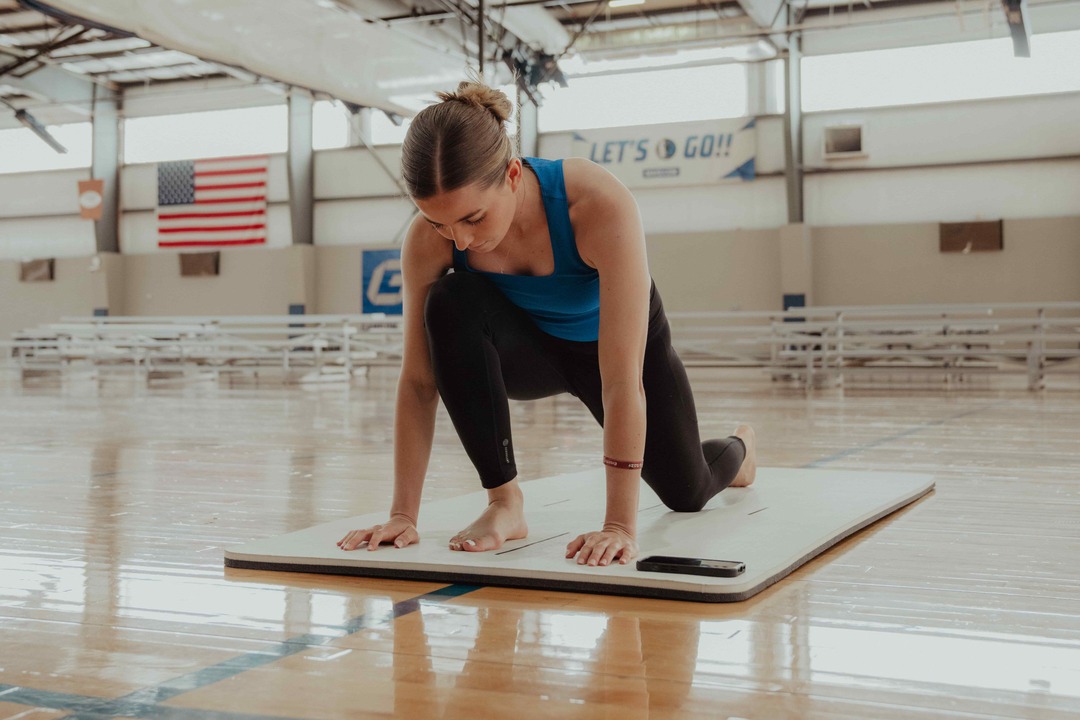
If you're prepping your body to lift some serious weight, it's important to squeeze some mobility work into your warm-up. But we're not just talking about doing some 90/90 hip stretches and cat-cows (which are great and deserve a spot in your workout routine, too).
We're talking about loading up. Zac Marion, DPT, a physical therapist and iFit trainer, says adding a dumbbell to your mobility session can improve your exercise prep for safer, more effective workouts. By loading your body, you activate the muscles, central nervous system, and the neurons that make your muscles fire. You prepare yourself to better recruit and engage your muscles for stronger, more powerful lifts, Marion says. You also increase engagement of your body's tendons and ligaments, improving your range of motion heading into running, strength, and high-intensity interval sessions. "Even just after 10 reps you'll have some noticeable improvements," he says. "A more mobile muscle is a more resilient muscle, which helps reduce injury."
When you're doing mobility work, you don't want to pick up the heaviest dumbbell you have, though. "The best weight to use is one that feels substantial but easy enough that there is no fatigue at the end of the warm-up," Marion says. (Think about half of what you'd use for a similar move during the heart of your workout.) "The idea is to increase muscle and neuronal activity while minimizing fatigue so that you can put the most effort into your workout." Take your time with each movement. "The longer the contraction, the more demand for neuromuscular recruitment. And lighting up all those neurons results in more power that you'll be able to generate during your strength training," Marion says. Marion shares his five favorite strength and mobility exercises before a workout.
Bonus: These movements are excellent strength exercises in and of themselves, so while you're not lifting a super challenging weight, you are still firing up those muscles. Try them out and incorporate them into your workout warm-ups. You can also perform them independently to rock your strongest mobility day ever.
1. Glute Bridge With Pullover
- Lie on your back with your feet flat on the floor and knees bent.
- Extend your arms overhead and hold each end of a dumbbell with both hands.
- Pressing your heels into the ground and squeezing your glutes, lift your hips and lower back off the floor until your body forms a diagonal line from the tops of your knees to your chest.
- Maintaining this bridge position, pull the dumbbell forward until it touches the tops of your thighs.
- Reverse the motion and bring the dumbbell back overhead, then slowly lower your hips and back to the floor.
Sets: 2
Reps: 5
Body Part: Butt, Back, and Chest
2. Dumbbell Step-Down
- Stand on top of a step or box and extend your arms in front of your chest, holding the dumbbell with both hands.
- Bend your right leg as you extend your left leg in front of you to tap your left heel on the ground.
- Drive through your right foot to straighten your leg and return the left leg to standing.
- Alternate sides with each rep.
Sets: 2
Reps: 5
Body Part: Butt and Legs
3. Single-Leg Romanian Deadlift
- Stand with your feet hip-width apart and hold a dumbbell with your right hand.
- Keep your left knee slightly bent, and hinge your hips back as you extend your right leg behind you for balance.
- Lower the dumbbell until your upper body is parallel to the floor.
- Push off your left heel on the ground to stand back up and return to the starting position.
- Do all reps, then switch sides.
Sets: 2
Reps: 5
Body Part: Butt and Legs
4. Turkish Get-Up
- Lie on your back with your right leg bent and hold a dumbbell above your chest with your right hand.
- Extend your left leg at a 45-degree angle on the floor and your left arm to the side.
- Keeping your right arm above your chest and your eyes on the dumbbell throughout the entire movement, push off your right foot on the floor to roll over to your left side, coming to your left elbow.
- Shift your weight from your left elbow to your left hand, corkscrewing your palm to the floor.
- Slide your left leg back to kneel on your left knee so that the knee and ankle are in a straight line with your left hand on the floor.
- Bring your left knee to face forward to be in a half-kneeling position.
- Press into your right heel to stand up, keeping the dumbbell overhead.
- Reverse the steps to return to the starting position.
- Do all reps, then switch sides.
Sets: 2
Reps: 5
Region: Full Body
5. Arm Bar
- Lie on your stomach and extend your arms to the sides, holding the dumbbell with your left hand.
- Driving through your torso, roll your left shoulder to the right, using your lat to pull the shoulder blade down and stabilize the weight.
- Make sure you stack the dumbbell directly over your shoulder.
- Pause for a moment before you lower your arm to the starting position.
- Do all reps, then switch sides.
Sets: 2
Reps: 5
Body Part: Arms and Shoulders
The Ultimate Mobility App for Athletes and Fitness Enthusiasts
Pliability offers a fresh take on yoga tailored for performance-oriented individuals and athletes. Our app features a vast library of high-quality videos designed to:
- Improve flexibility
- Aid recovery
- Reduce pain
- Enhance range of motion
Personalized Mobility Programs for Optimal Health
Pliability provides daily-updated custom mobility programs for those interested in optimizing their health and fitness. It also includes a unique body-scanning feature to pinpoint mobility issues. If you're feeling limited by pain or your ability to move, Pliability aims to complement your fitness routine and help you move better.
Sign up today for seven days free on iPhone, iPad, Android, or our website to improve flexibility, aid recovery, reduce pain, and enhance range of motion with our mobility app.
Related Reading
- Golf Mobility Exercises
- Upper Body Mobility Exercises
- Mobility Exercises For Runners
- Can You Over Stretch
- Squat Mobility Exercises
- Functional Mobility Exercises
- Why Stretching Is Important
- Foot Mobility Exercises
- Arm Mobility Exercises
- Hamstring Mobility Exercises
- Elbow Mobility Exercises
- Rotator Cuff Mobility Exercises
- Bed Mobility Exercises
- What Are Mobility Exercises
- Full Body Mobility Exercises
10 Weighted Mobility Exercises Inspired By Olympic Weightlifters

Olympic weightlifting requires high mobility, particularly in the hips, ankles, and shoulders. Olympic weightlifters use mobility training to optimize performance and prevent injuries, making their exercises ideal for improving movement patterns. Below are ten weighted mobility exercises used by weightlifters to improve performance.
1. PVC Pipe Pass-Throughs
This exercise is incredibly straightforward yet highly effective in improving shoulder mobility, a key aspect for both the snatch and clean & jerk lifts in Olympic weightlifting.
- Hold a PVC pipe (or a broomstick if a pipe isn’t readily available) with a grip wider than your shoulders.
- Start with the pipe in front of you at waist level.
- Keeping your arms straight, gradually lift the pipe up and over your head until it reaches behind your waist, thus completing a full circle if your mobility allows it.
The goal is to make the circle as wide as possible while maintaining a straight-arm position throughout the movement.
2. Deep Squat Prayer Stretch
This powerful mobility exercise focuses on increasing flexibility in the hips, groin, and ankles, which is vital in Olympic weightlifting.
- Start by adopting a deep squat position, with your feet slightly wider than shoulder width apart and your toes pointing outward.
- Bring your palms together in a “prayer” position, and use your elbows to push your knees outward gently.
This increases the stretch in your hips and groin. Keep your back straight and chest up, and try to sink your hips lower while maintaining your balance. The goal isn’t about going deep quickly but progressively increasing the depth of your squat over time while ensuring proper form. Regular practice of the deep squat prayer stretch will enhance your lower body mobility and contribute significantly to the stability required in Olympic lifts.
3. Deep Goblet Squat
This highly beneficial exercise improves hip, ankle, and lower back mobility, critical for executing Olympic weightlifting lifts. To perform a deep goblet squat, you begin by:
- Hold a kettlebell or a dumbbell close to your chest.
- Your feet should be shoulder-width apart, with your toes pointing slightly outward.
- Engage your core and maintain a straight back as you lower your body into a squat.
- Aim to go as deep as your flexibility allows, ideally until your thighs are parallel to the floor or lower. Keeping your heels grounded throughout the squat is crucial to maximize mobility benefits.
- Push your knees out slightly to accommodate your torso, and maintain your balance by keeping the weight close to your chest.
By practicing deep goblet squats regularly, you not only enhance your lower body mobility but also strengthen your quads, glutes, and core, thus facilitating improved performance in weightlifting. Always remember to perform the movements slowly and in control, prioritizing form and depth over speed.
4. 90-90 Hip Rotation
This exercise, named for the 90-degree angles you form with your legs, is an excellent method for increasing hip mobility and flexibility, which are essential for effective Olympic weightlifting.
- Begin by sitting on the floor, setting both legs at 90-degree angles, one leg in front of you and the other to the side.
- Your front knee and ankle should be 90 degrees, as should your back hip, knee, and ankle.
Maintaining a tall spine, gently lean forward to feel a stretch in your front hip. Slowly rotate your body to switch the leg in front, rotating at the hips. This hip rotation should be done slowly and deliberately, focusing on maintaining the 90-degree angles.
5. Supported Side Lunge Mobilization
This exercise is a valuable tool for enhanced mobility in Olympic weightlifting, particularly targeting the hips and inner thigh muscles.
- Begin by assuming a wide stance and using sturdy support like a rack or pole for balance.
- Bend one knee and sink into a side lunge, keeping the other leg straight.
This movement increases flexibility in the hip joint and strengthens the surrounding muscles, contributing to a more secure and effective execution of weightlifting exercises.
6. Cat-Camel Stretch
- Get on your hands and knees.
- Arch your back and pull your belly button toward your spine (the cat position).
- Lower your belly toward the ground and lift your chest and tailbone toward the sky (the camel position).
This stretch increases the mobility and flexibility of the entire spine, including the thoracic region.
7. Thread the Needle
- Start on all fours, then slide one arm under your body toward the opposite side, rotating your upper body.
- Try to reach as far as possible while keeping your lower body stationary.
This exercise enhances thoracic rotation and stretches the upper back muscles.
8. Hammer Curl
The hammer curl, also known as the dumbbell hammer curl or the neutral grip dumbbell curl, is a strength training exercise that targets your biceps and forearms. The hammer curl varies from the traditional bicep curl by using a neutral grip with your palms facing each other during the full range of motion. With proper form, hammer curls can promote upper-body stability and arm strength.
9. Overhead Tricep Extension
An overhead tricep extension, also known as a dumbbell tricep extension, is an isolation exercise that targets your triceps muscles. Perform overhead tricep extensions by holding a pair of dumbbells and standing with your feet shoulder-width apart.
- Raise the dumbbells over your head.
- Keep your upper arms in place and hinge your elbow, lifting the dumbbells overhead through a full range of motion.
Although this triceps exercise is typically performed with a pair of dumbbells, you can also use a resistance band, a pulley on a cable machine, or a barbell.
10. Goblet Lunge
A goblet lunge, also known as a goblet forward lunge, is a weighted lunge variation that activates muscle groups throughout your body. Perform goblet lunges by holding a free weight, like:
- Dumbbell
- Kettlebell
- Medicine ball
In front of your chest. Step forward with your right leg and bend your knees, hips, and ankles to lower yourself into a lunge position. Push into your right foot and stand again. Repeat this movement with your left leg. Once you’ve practiced the standard goblet lunge, try other goblet lunge variations like the goblet reverse lunge or lateral lunge.
Guidelines & Tips for Integrating Mobility Exercises

Weighted mobility exercises belong in any lifter's routine. These drills enhance joint health to improve performance and reduce injury risk. Integrate weighted mobility exercises into your training by performing them regularly as part of your warmup and cooldown before and after workouts. You can increase the weights and intensity of these movements to build mobility with resistance while preparing the muscles and joints for your upcoming training demands.
Timing Mobility Exercises with Your Workout Routine
To enhance muscle recovery, incorporate mobility drills at the beginning of workouts as part of a dynamic movement prep and after sessions as part of the cooldown. Performing weighted mobility exercises at the start of your workout targets the muscles and joints you’ll use during your weightlifting session.
This helps improve their range of motion and prepares them for the workout. After your workout, mobility drills can help your body recover by promoting circulation and returning your muscles to their normal resting state.
How Often Should You Do Weighted Mobility Exercises?
Daily mobility drills are recommended to maintain and improve current mobility levels, especially focusing on critical joint areas for safe lifting. The hips, spine, and shoulders should be your top priority when preparing for any major barbell lift, such as squats or deadlifts.
How Long Should You Practice Weighted Mobility Drills?
Dedicate 10 minutes per session to mobility work, adjusting based on personal needs and specific training demands. Suppose you are working to correct a specific issue or preparing for a major lift. Consider extending your mobility routine to 15 or 20 minutes to ensure you adequately target the right areas.
How to Integrate Mobility with Your Lifting Routine
Align mobility exercises with the specific demands of your weightlifting workouts, ensuring that every muscle group and joint is adequately prepared for the workout ahead. For example, if you’re warming up for deadlifts, perform mobility drills that target the hips, hamstrings, and spine.
Tips for Optimal Benefits
Consistency is key to adhering to a regular mobility routine, significantly enhancing joint range, flexibility, and overall lifting performance. Personalize your routine and adapt it to address personal mobility limitations and goals, such as improving the deep squat or perfecting the starting position for deadlifts.
Progress gradually expands the range of exercises and the intensity to safely build mobility without risking injury. Listen to your body adjust your mobility training based on feedback from your body, focusing on areas that may require more attention to prevent motion without pain.
Tips for Maintaining Proper Form and Technique
Proper form and technique are crucial for maximizing the benefits of mobility exercises and preventing injuries. We’ll explore tips to help you perform each movement correctly and maintain the best possible posture throughout your mobility routine.
Use Controlled Movements
Focus on performing each mobility exercise with control, maximizing the effectiveness and minimizing the risk of injury.
Maintain Good Posture
Good posture is essential throughout each exercise to ensure the joints and muscles are aligned and engaged correctly.
Engage the Right Muscles
Ensure appropriate muscle groups are activated during each exercise to support the intended movement patterns.
Use Mirrors or Video Feedback
Utilize visual aids to continuously monitor and correct your form, ensuring each movement is performed correctly.
Seek Professional Guidance
Consult with a mobility expert or physical therapist regularly to refine your technique and ensure your mobility routine is optimized for your needs.
How to Exercise with Limited Mobility
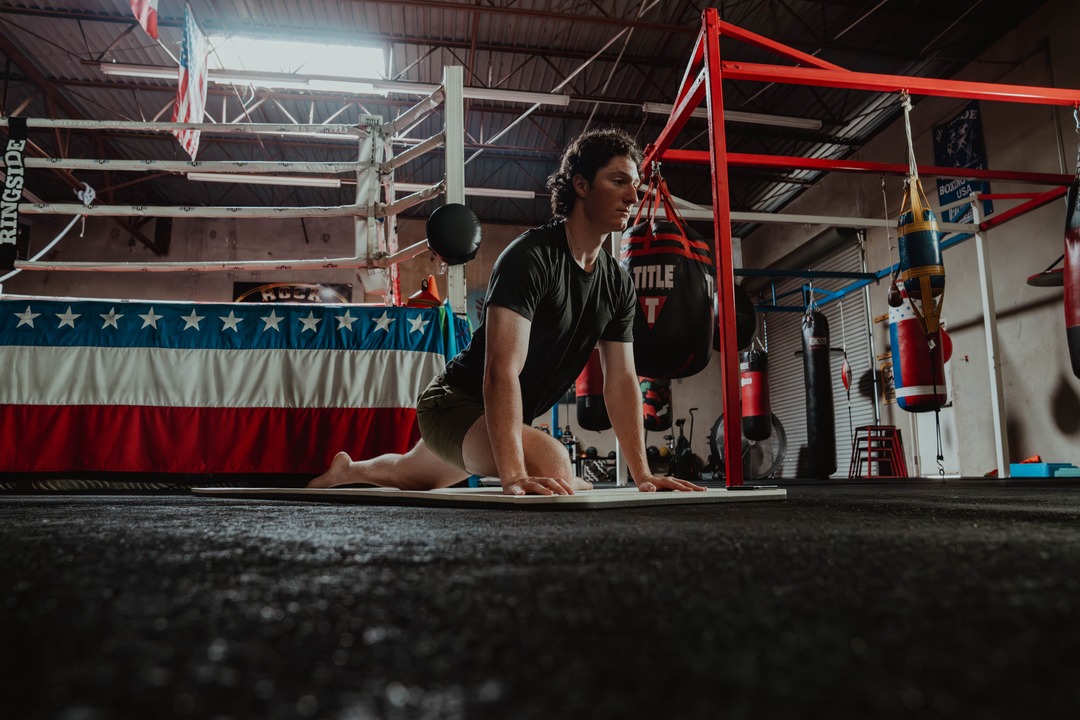
Limited mobility doesn’t mean you can’t exercise. You don’t need full mobility to experience the health benefits of exercise. Suppose injury, disability, illness, or weight problems have limited your mobility. There are still plenty of ways you can use exercise to boost your mood, ease depression, relieve stress and anxiety, enhance your self-esteem, and improve your whole outlook on life.
When you exercise, your body releases endorphins that energize your mood, relieve stress, boost your self-esteem, and trigger overall well-being. If you’re a regular exerciser sidelined with an injury, you’ve probably noticed how inactivity has caused your mood and energy levels to sink.
Overcoming Health Challenges to Experience the Mental and Physical Benefits of Exercise
Exercise has such a powerful effect on mood that it can treat mild to moderate depression as effectively as antidepressant medication. An injury doesn’t mean your mental and emotional health is doomed to decline. While some injuries respond best to total rest, most simply require you to reevaluate your exercise routine with help from your doctor or physical therapist. Suppose you have a:
- Disability
- Severe weight problem
- Chronic breathing condition
- Diabetes
- Arthritis
- Other ongoing illness
You may think that your health problems make it impossible for you to exercise effectively. Or perhaps you’ve become frail with age and are worried about falling or injuring yourself if you try to exercise. The truth is, regardless of your age or current physical condition. Whether you’ve exercised in the past or not, there are plenty of ways to overcome your mobility issues and reap exercise's physical, mental, and emotional rewards.
The Best Types of Exercise for Limited Mobility
What types of exercise are possible with limited mobility? It’s crucial to remember that any type of exercise will offer health benefits. Mobility issues inevitably make some types of exercise easier than others, but no matter your physical situation, you should aim to incorporate three different types of exercise into your routines:
- Cardiovascular exercises: Raise your heart rate and increase your endurance. These can include walking, running, cycling, dancing, tennis, swimming, water aerobics, or “aqua jogging." Many people with mobility issues find exercising in water especially beneficial, as it supports the body and reduces the risk of muscle or joint discomfort. Even if you’re confined to a chair or wheelchair, it’s still possible to perform cardiovascular exercise.
- Strength training exercises: involve using weights or other resistance to build muscle and bone mass, improve balance, and prevent falls. If you have limited mobility in your legs, your focus will be on upper-body strength training. Similarly, if you have a shoulder injury, your focus will be more on strength training your legs and core.
- Flexibility exercises: Help enhance your range of motion, prevent injury, and reduce pain and stiffness. These may include stretching exercises and yoga. Even if you have limited mobility in your legs, for example, you may still benefit from stretches and flexibility exercises to prevent or delay further muscle atrophy.
Setting Yourself Up for Exercise Success
To exercise successfully with limited mobility, illness, or weight problems, start by getting medical clearance. Talk to your doctor, physical therapist, or other healthcare provider about activities suitable for your medical condition or mobility issue.
Starting an Exercise Routine
Start slow and gradually increase your activity level. Start with an activity you enjoy, go at your own pace, and keep your goals manageable. Accomplishing even the smallest fitness goals will help you gain body confidence and keep you motivated.
Make exercise part of your daily life. Plan to exercise at the same time every day and combine a variety of exercises to prevent boredom.
Stick With It
It takes about a month for a new activity to become a habit. Write down your reasons for exercising and a list of goals, and post them somewhere visible to keep you motivated.
Focus on short-term goals, such as improving your mood and reducing stress, rather than goals, such as weight loss, which can take longer to achieve. It’s easier to stay motivated if you enjoy what you’re doing, so find ways to make exercise fun. Listen to music, watch a TV show while you work out, or exercise with friends.
Expect ups and Downs.
Don’t be discouraged if you skip a few days or weeks. It happens. Just get started again and slowly build up to your old momentum.
Staying Safe When Exercising
Stop exercising if you:
- Experience pain
- Discomfort
- Nausea
- Dizziness
- Lightheadedness
- Chest pain
- Irregular heartbeat,
- Shortness of breath
- Clammy hands
Listening to your body is the best way to avoid injury. If you continually experience pain after 15 minutes of exercise, limit your workouts to 5 or 10 minutes and instead exercise more frequently.
Avoid Activity Involving an Injured Body Part
If you have an upper-body injury, exercise your lower body while the injury heals, and vice versa. When exercising after an injury has healed, start back slowly, using lighter weights and less resistance.
Warm up, Stretch, and Cool Down
Warm up with a few minutes of light activity such as walking, arm swinging, and shoulder rolls, followed by light stretching (avoid deep stretches when your muscles are cold). After your exercise routine, whether cardiovascular, strength training or flexibility exercise, cool down with a few more minutes of light activity and deeper stretching.
Drink Plenty of Water
Your body performs best when it’s properly hydrated.
Wear Appropriate Clothing
Such as supportive footwear and comfortable clothes that won’t restrict your movement.
Getting More Out of Your Workouts
Add a mindfulness element. Whether exercising in a chair or walking outside, you’ll experience a greater benefit if you pay attention to your body instead of zoning out. By really focusing on how your body feels as you exercise, the rhythm of your breathing, your feet striking the ground, and your muscles tightening as you lift weights, for example, you’ll not only improve your physical condition faster but may also experience more significant benefits to your mood and sense of well-being.
Overcoming Mental and Emotional Barriers to Exercise
As well as the physical challenges you face, you may experience mental or emotional barriers to exercising. It’s common for people to feel self-conscious about their weight, disability, illness, or injury and want to avoid working out in public places. Some older people find that they’re fearful about falling or otherwise injuring themselves.
Finding Joy in Movement: Adapting Your Exercise Routine
Don’t focus on your mobility or health issues. Instead of worrying about the activities you can’t enjoy, concentrate on finding activities that you can. The more physical challenges you face, the more creative you’ll need to be to find an exercise routine that works for you. If you used to enjoy jogging or cycling, for example, but injury, disability, or illness means they’re no longer options, be prepared to try new exercises.
With some experimenting, you may find something you enjoy just as much. Be proud of your effort to exercise, even if it’s not very successful at first. It will get easier the more you practice.
Related Reading
- Gowod Vs Pliability
- Tennis Mobility Exercises
- Weighted Mobility Exercises
- Cervical Mobility Exercises
- Resistance Band Mobility Exercises
- Rib Mobility Exercises
- Glute Mobility Exercises
- Best Yoga App
- Free Apps For Stretching And Flexibility
- Mobility Apps
- Stretching Apps
- Chest Mobility Exercises
- Glute Stretches
- Gluteus Medius Stretch
- Glute Stretch
- Cervical Radiculopathy Exercises
Improve Your Flexibility with Our Mobility App Today | Get 7 Days for Free on Any Platform
Pliability offers a fresh take on yoga tailored for performance-oriented individuals and athletes. Our app features a vast library of high-quality videos designed to:
- Improve flexibility
- Aid recovery
- Reduce pain
- Enhance range of motion
Personalized Mobility Programs for Optimal Health
Pliability provides daily-updated custom mobility programs for those interested in optimizing their health and fitness. It also includes a unique body-scanning feature to pinpoint mobility issues. If you're feeling limited by pain or your ability to move, Pliability aims to complement your fitness routine and help you move better.
Sign up today for seven days absolutely for free on iPhone, iPad, Android, or our website to improve flexibility, aid recovery, reduce pain, and enhance range of motion with our mobility app

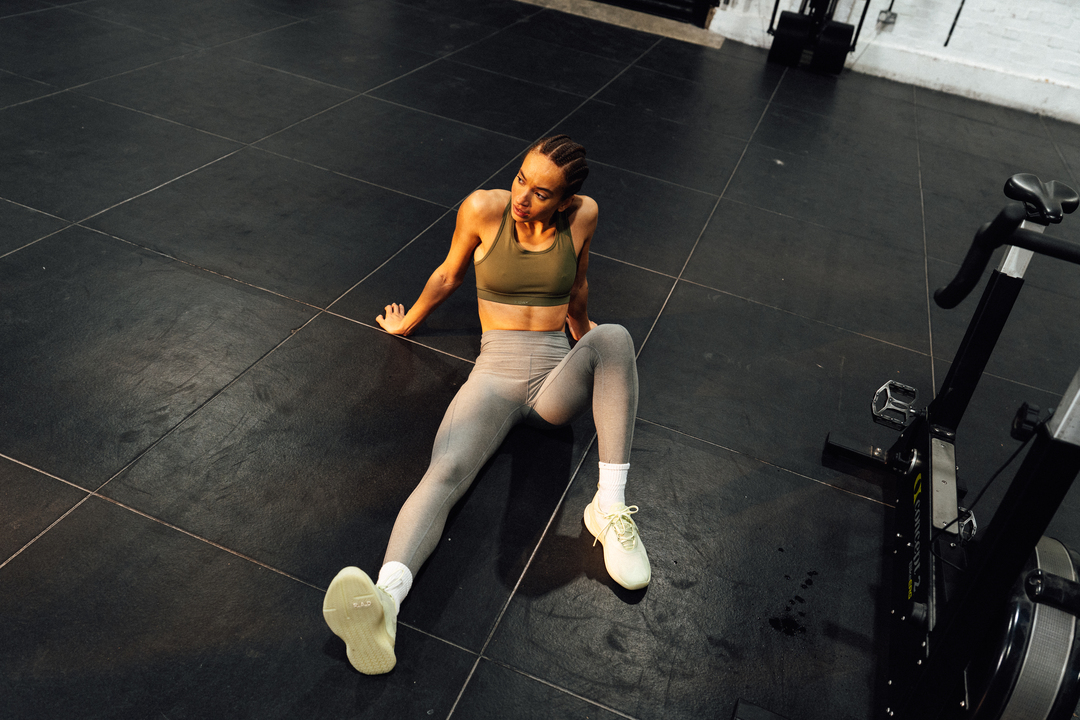

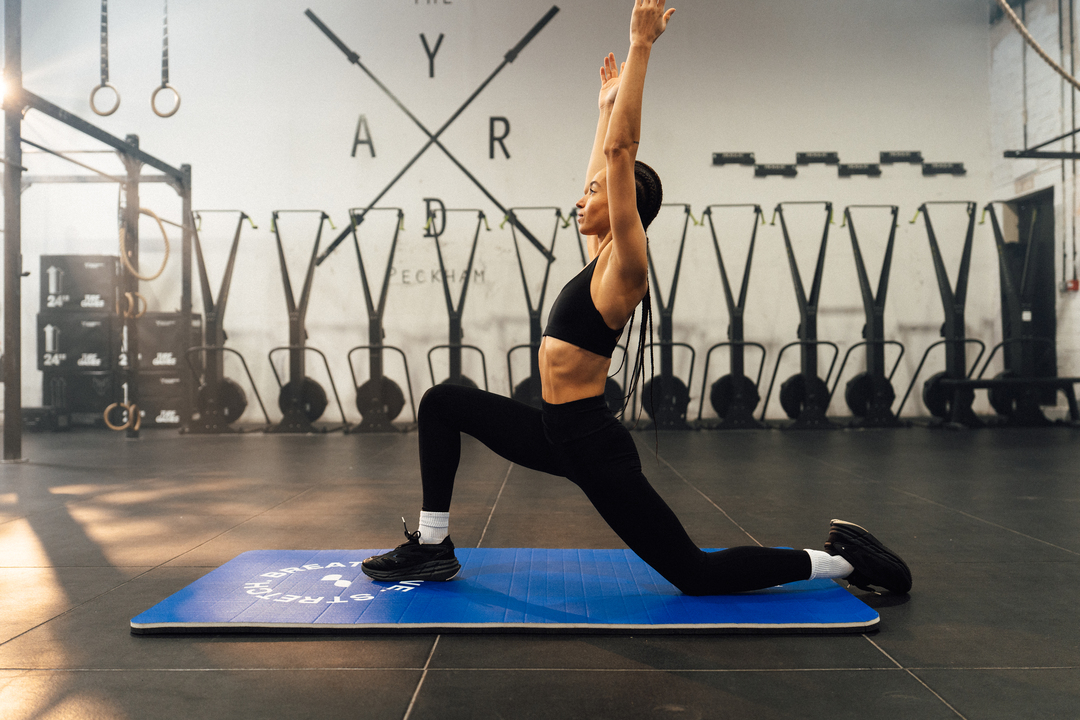
.jpg)
.jpg)


